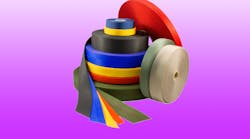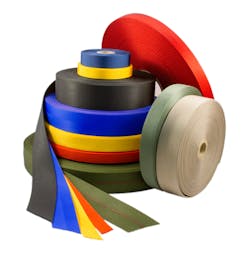Specialized woven fabrics can help wrap together numerous systems and circuits in aerospace and aviation applications, and long-time fabric developer Bally Ribbon Mills has developed a line of woven webbings especially for these types of applications. The fabrics include narrow two-dimensional (2D) and three-dimensional (3D) thermoset and thermoplastic fabrics as used in parachutes, flight suits, safety components, and air slides. The woven webbings, which are used in the International Space Station, can meet specific strength requirements for structure components in space and aviation systems.
Compared to materials based on steel and aluminum, these strong, lightweight webbings help reduce material costs and increase system safety levels. While the durable narrow woven fabrics are often fabricated into standard products, custom engineered products can be developed or special manufacturing processes modified to meet specific user requirements.
Advanced fabrics such as these allow for the integration of sensors and other electronic devices into the framework of commercial and military aircraft. (Courtesy of Balley Ribbon Mills)
The narrow woven fabrics, tapes, and webbing (see figure), measuring 12 in. wide or less, are typically used in parachutes and many other commercial, military, and aviation applications. Advanced designs are developed based on enhanced weaving technologies and materials woven from high-performance fibers, such as Kevlar, Vectran, and Zylon. Woven 2D and 3D thermoset and thermoplastic polymer composite structures can be formed into net-shape structures by means of a multidimensional continuous weaving method.
The most recently developed fabrics include 2D and 3D Thermoplastic Composite Materials (TPCM) and narrow woven “E-WEBBINGS.” TPCM fabric has been developed to provide localized reinforcement in molding/forming processes and offers excellent strength and shear resistance. The E-WEBBINGS materials were developed nominally for Internet of Things (IoT) sensors and devices targeted for commercial, personal, and military aircraft. The materials are constructed in such a way that allows for the integration of IoT sensors and other electronic devices into the fabrics.


